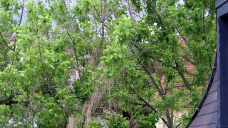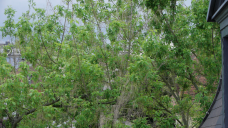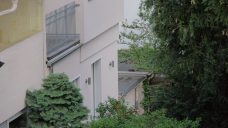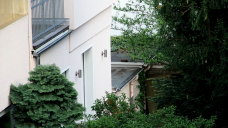
-
as I said a few days For use IS with manual lenses in E-M5:
Dandelion Chip: http://peleng8.com/af-lens-adapters/af-chip-dandelion-micro-4-3-af-chip-dandelion-iv-generation-for-micro-4/3.html
i not tested, only i see video and put info here.
-
@Manu4Vendetta Top Secret. First rumours from panasonic G3 or GX1, but if see test i think not possible or olympus mod is brutal.
-
Any idea about the origen of the sensor of this jewel?
-
E-M5 High isos jpeg i see better that nex7 and almost APS-C http://www.imaging-resource.com/IMCOMP/COMPS01.HTM
-
Olympus EM-5 test images, special for pixel peepers :-)
-
My take is that Oly while they seem like a copycat they're actually quite the innovators, though they've relied on Panasonic for sensors.
People like Olympus because they have really good jpg processing/color, this relates to video as well. People also like them because their innovation in new technologies that often are thinking outside the box (like in body stabalization, live view, etc...). Other people like Olympus because of history, and they like the asthetic/style of thier bodies. Oh, and others like Olympus because they are amazing at making glass, they've just gotten started with m43 (with the 12mm and 45mm), but in fourthirds they had some of the best performing lens' out there, even back in the day of Pen/OM the lens' were high class. People still use OM glass on Canons because of their rendering.
Indeed though, the GH2 is a better hybrid if video is important. But it seems that Olympus has a lot of potential if they could just cater a touch more on video. Give us more framerates, audio in/out, and it'd have some big advantages over the GH2 (like in body stabilization and a better image)
-
Back on video? would you buy an OMD for video or a hybrid? For me its a non entity, the stills ratio of the GH2 are more flexible, native 16:9 and 3:2 ratio's. The video ratios are native. The dr seems up there, I don't trust Oly, they appear to be a bit of a copy-cat company that dresses things up as their own. Why they have so many loyal followers is beyond me.
-
OK, cool! Look at the histo's, for the HL the GH2 is clearly over-blown by a margin over OMD HL. In the shadows they look similar but the image is clearly darker on the GH2! It suggests, metering-tone curve are very different? you cant draw any conclusions, I'm sorry if I appear to be have having a go, promise I'm not but you need to see beyond fascination with your new toys? I am not seeing how you proved OMD has more DR, with the histo its not black and white.
-
Also - The reason I did both shadows and highlights is so that if there were small variations in the exposure between the two due to ISO differences, that you would either end up inconclusive (for instance, if the E-M5 had had better shadow detail, but worse highlights, it wouldn't tell you much)...but since the E-M5 was better in BOTH instances, it's pretty clear to me.
This test was not intended to replace specific scientific measurement...it was to see how the cameras reacted in the real world...and one of the things (about the only thing really) that wasn't up to snuff on the GH2 was that it would clip highlights quite easily, to the point that they couldn't be pulled back in RAW. I have not had that issue with the E-M5...in fact, it has been very, very difficult to blow highlights in everyday shooting. (and I noticed this was not at the expense of the shadows). The test was basically to confirm to me that I wasn't seeing what I wanted to in my daily shooting, and sure enough, it's pretty clear the E-M5 holds more detail in the highlights as well as in the shadows.
-
adventsam, I don't know what your problem is with me. You've got this axe to grind, and when I don't respond to you on DPReview in what you view as an adequate amount of time, you now go around to other sites calling me a cheat? Ever think that, I don't know, I might actually have a job and family and can't drop everything to get you your histograms right away?
Anyway, histograms have been posted in your 'call out' thread on DPReview.
http://forums.dpreview.com/forums/readflat.asp?forum=1041&message=41483558As to the other comments. Blowing out the channels is a perfectly valid way to test the high and low limits of dynamic range. Why? Well, if I cause a good portion of the image to clip the highlights, I can see what brightness values WEREN'T clipped, and where the pixels become saturated. This gives an upper bound to the brightness levels the sensor can record. Similarly, blocking out a good portion of the shadows well let me see how dark the sensor can record and still yield valuable data. Obviously you wouldn't shoot like that, but the test was designed to stress the sensors equally. Also, Adventsam..you keep saying that ISO 200 on the OMD is like ISO 100 on the GH2 and you have NOTHING to back that up. In fact, in my experience thus far with both cameras, the OMD is exposing about 1/3 stop brighter at the same ISO and settings on the same scene as the GH2 is, when done under completely constant light.
Anyway, look at the histograms in the link above if you are interested.
Thanks, Jordan Steele
-
The guy is a bit of a cheat, there is no histo data that would be important to see and easily done from LR(which he used) to show how blown the em5 was c/w gh2. Again, maybe the em5 does have better dr but the iso of OMD seems suspect to me and the real value is closer to 100(like the pen's) also has iso200 base and was tested to iso130 by dxo. Why do this? easy, so that all iso's look a stop better than they are further up, so iso400 of OMD is really iso800 of GH2 etc etc.
-
@joesiv: The point is that his whole "measurement" was based on voluntarily over- and under-exposed images:
I chose a high DR area, and then decided to see how they did when overexposed 3 stops and pulled back, and underexposed 3 stops and pushed back.
... and that makes this a test of how much of the sensor value range is utilized by the cameras default metering, but not a test of DR.
I am not saying that the EM5 does not have a larger dynamic range for still images than the GH2, there have been grayscale tests (like the ones from dpreview) which indicate that. But the admiringlight.com test does not measure that.
-
@karl I'm not sure what you're talking about. The site metered with one camera, and then set both cameras (in manual) to the exact same settings, with exception to ISO which 160 was selected for GH2 and 200 was set for EM5 (both the native ISO's). He noted that viewing the images after on the computer showed gray point to be pretty much identical.
I'm not sure how this is unfair as both cameras are getting the same amount of light, and he tested both highlights and shadows from the same image. The EM5 was better in both ends, so even if he were to expose darker for the GH2, the shadows would have been even worse.
-
How "admiringlight.com" can claim that his test is one of dynamic range is completely beyond me, as are his resulting conclusions.
You tell a camera what region it should meter exposure for (as in e.g. "spot" or "whole image"), and if the camera metering does the right thing, it will choose ISO/aperture/shutter such that the RAW values read out from the sensor will be zero for the darkest part of your region of interest and 4095 (2^12-1, assuming 12 bit per channel) for the brightest pixels in your region of interest, with hopefully 4094 reasonably spread and well distinguishable levels in between.
Now if you voluntarily increase or decrease the exposure value, more pixels than before will have either zero or 4095 as their readout value, causing some loss of information in either the dark or the bright regions, in exchange for providing somewhat more accuracy for the reproduction of the remaining non-clipped pixel values.
If a cameras metering is such that by default, it does not make use of the whole value range the sensors analog-to-digital converters could provide, this means the camera spoils some of the accuracy it could reproduce colors with. And of course, if a camera does so, it will lose less details if the image is voluntarily, at the users request, over or under exposed - in exchange for losing accuracy for every shot.
The "admiringlight.com" test setup punishes a camera for optimal metering, and favors cameras doing less than optimal metering.
By no means, this is a test of dynamic range. For testing that, you only need one correctly exposed image that has a grey scale from very dark black to very bright white in it, so you can measure how many different shades of grey the sensor can distinguish over which range of darkness/brightness.
-
A dynamic range comparison (still image)
http://admiringlight.com/blog/olympus-e-m5-vs-panasonic-gh2-dynamic-range-battle/
-
Olympus OM-D E-M5 Shooter's Report
http://www.imaging-resource.com/PRODS/omd-em5/omd-em5A.HTM#SR
-
Today, a friend of mine visited who recently bought an EM5 - and since we both own a Panasonic 14mm-140mm lens, we were able to shoot some stuff for comparison side-by-side at the same time.
Bottom line: I wouldn't trade in my GH2 for an EM5.
See below three stills extracted from 1920x1080 video clips. All stills were saved from I-frames.
The first from a cloudy evening outdoor daylight scene (at the same focal length, but only almost the same position). The moving leaves expose compression artifacts from the EM5. Ok, 100MBit/s video vs. 17MBit/s video may not be a fair comparison, but unless the EM5 is hacked, its users won't have a better choice.
The second is extracted from an indoor low-light shot, with very little light coming from one window. The GH2 shot was taken at ISO 12800. While of course it's noisy, you can still recognize the book shelf and read some titles. The EM5 did not allow to choose such a high ISO for video, so it's severely underexposed, and any details gone into the black void.
The third is extracted from a shot to a region with high contrast - a bright wall of a house, just besides some dark garden trees. No motion was involved, so the EM5 does not suffer from compression artifacts. But in the EM5 material, there is clearly too much contrast, so the dark regions and highlights are lacking detail, and the house wall (which is actually colored a little pink) looks too white. The EM5 shot is also sharpened a lot, too much for my taste. Maybe some option settings my friend did not try yet would allow for a "flatter" image with the EM5.
Regarding non-video still images: The RAW-to-JPEG conversion of the EM5 clearly applies more reasonable defaults, so its JPEGs look somewhat better. But in the RAW format comparison, the results from the GH2 looked as good or even better than those of the EM5, especially at low ISO values. At high ISO values, the EM5 was very slightly better. (The output of RawTherapee from the .RW2 files looked awesome in comparison to the JPEGs the GH2 had written, while the best results I could get from the .ORW files off the EM5 looked like the JPEGs the EM5 had also written, which means the EM5 did a better job of in-camera processing, but does not really have a significantly better sensor than the GH2.)
I understand that some people highly value the weather-sealing of the EM5, or particulary like its higher resolution display. But to me it's more relevant that the GH2 has a fully articulating display, and that it has a built-in flash for the few occasions that I need such for documentary reasons. I would miss both a lot with the EM5. And I am ok with a non-weather-sealed plastic body (that is 20g lighter than the EM5) especially since I need to buy an expensive underwater-housing, anyway.

 still_from_low_light_video_em5.png1920 x 1080 - 247K
still_from_low_light_video_em5.png1920 x 1080 - 247K
 still_from_video_em5.png1920 x 1080 - 3M
still_from_video_em5.png1920 x 1080 - 3M
 still_from_low_light_video_gh2.png1920 x 1080 - 3M
still_from_low_light_video_gh2.png1920 x 1080 - 3M
 still_from_video_gh2.png1920 x 1080 - 4M
still_from_video_gh2.png1920 x 1080 - 4M
 still_from_video_dr_gh2.png1920 x 1080 - 2M
still_from_video_dr_gh2.png1920 x 1080 - 2M
 still_from_video_dr_em5.png1920 x 1080 - 2M
still_from_video_dr_em5.png1920 x 1080 - 2M -
Wow, what I particularly like about this rainy video is the effectiveness of the image stabilization. You don't really notice the person is walking. You can notice it, but it is minimal.
It is more noticeable when camera movements are a little larger, and the image is stretched in and out near the corners. But that's the deal with wide angle lenses anyway. It would be much worse, I guess, without IS. Would be nice to see a comparison video without Image Stablization.
-
@Vitaliy_Kiselev thanks for link very interesting guide, many things are not in the manual
-
@cocute, thanks cocute, that's pretty much what I suspected, the horizontal change is quite minimal! I honestly don't think that it could be fully software based. Some similar software based stabalization like on the iphone 4s trim much more to effectively reduce shake.
The crop on the em5 might be similar to the d800, used to get the best pixel ratio for binning/skipping.
-
Getting the most out of the Olympus E-M5
http://www.dpreview.com/articles/9115179666/user-guide-getting-the-most-out-of-the-olympus-e-m5
Howdy, Stranger!
It looks like you're new here. If you want to get involved, click one of these buttons!
Categories
- Topics List23,993
- Blog5,725
- General and News1,354
- Hacks and Patches1,153
- ↳ Top Settings33
- ↳ Beginners256
- ↳ Archives402
- ↳ Hacks News and Development56
- Cameras2,368
- ↳ Panasonic995
- ↳ Canon118
- ↳ Sony156
- ↳ Nikon96
- ↳ Pentax and Samsung70
- ↳ Olympus and Fujifilm102
- ↳ Compacts and Camcorders300
- ↳ Smartphones for video97
- ↳ Pro Video Cameras191
- ↳ BlackMagic and other raw cameras116
- Skill1,960
- ↳ Business and distribution66
- ↳ Preparation, scripts and legal38
- ↳ Art149
- ↳ Import, Convert, Exporting291
- ↳ Editors191
- ↳ Effects and stunts115
- ↳ Color grading197
- ↳ Sound and Music280
- ↳ Lighting96
- ↳ Software and storage tips266
- Gear5,420
- ↳ Filters, Adapters, Matte boxes344
- ↳ Lenses1,582
- ↳ Follow focus and gears93
- ↳ Sound499
- ↳ Lighting gear314
- ↳ Camera movement230
- ↳ Gimbals and copters302
- ↳ Rigs and related stuff273
- ↳ Power solutions83
- ↳ Monitors and viewfinders340
- ↳ Tripods and fluid heads139
- ↳ Storage286
- ↳ Computers and studio gear560
- ↳ VR and 3D248
- Showcase1,859
- Marketplace2,834
- Offtopic1,320
Tags in Topic
- olympus 121
- mft 47
- professional 8
- retro 5
- olympus-d 2





